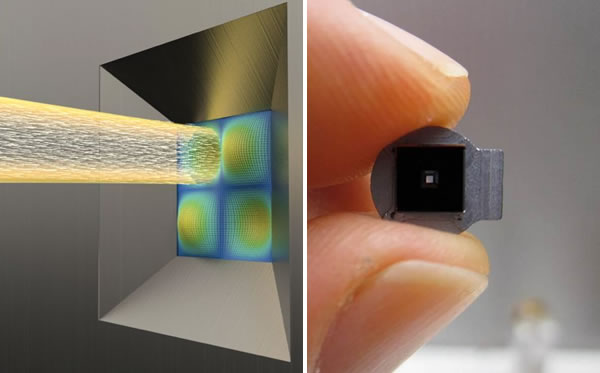
Thus far, the effect of the Uncertainty Principle has been material in very, very small particles (like electrons). Until now:
In recent years, however, physicists have been pushing the limits on which scales the principle appears in. To that end, Purdy and his colleagues created a 0.02-inch-wide (0.5 millimeters) drum made of silicon nitride, a ceramic material used in spaceships, drawn tight across a silicon frame.Tia Ghose of LiveScience has the story: Here.
They then set the drum between two mirrors, and shined laser light on it. Essentially, the drum is measured when photons bounce off the drum and deflect the mirrors a given amount, and increasing the number of photons boosts the measurement accuracy. But more photons cause greater and greater fluctuations that cause mirrors to shake violently, limiting the measurement accuracy. That extra shaking is the proof of the uncertainty principle in action. The setup was kept ultra-cold to prevent thermal fluctuations from drowning out this quantum effect. [...]
The results of the recent experiment are novel in that they show both classical and quantum mechanics operating on the same scale, said Saurya Das, a theoretical physicist at the University of Lethbridge in Canada, who was not involved in the study.
"Half a millimeter is like something which we can actually hold in our hand," Das told LiveScience. "Obviously classical mechanics is valid, but they make quantum mechanics relevant at that size."

No comments:
Post a Comment